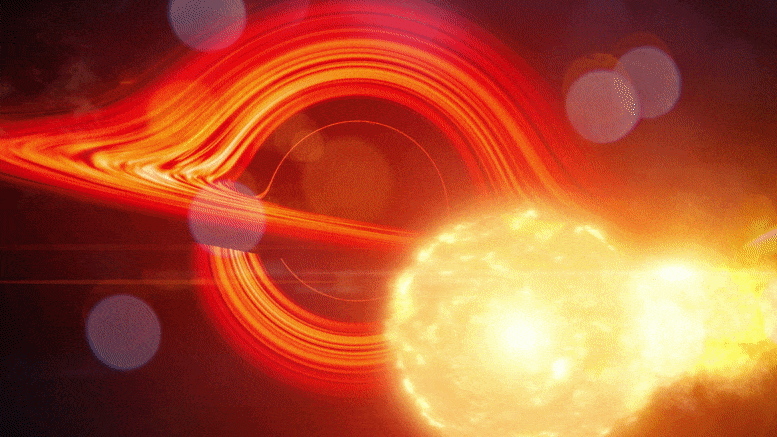A triple system with a silent black hole.
A triple system with a silent black hole.

Souce
Many black holes appear to form a pair with another object, be it a star, a neutron star or another black hole, they usually spiral around each other attracted by the gravity of the black hole that has more mass and in this way create a pair narrow orbital, but what astronomers have now discovered is very strange.

Souce
That a black hole appears to have a gravitational attraction on such a distant object raises questions about its origin, how this is possible, the key to this question is that current theory tells us that black holes are formed from violent explosions. of a dying massive star, a process known as a supernova by which that star releases an enormous amount of energy and light in a final burst before collapsing and transforming into a black hole, but if this black hole we are talking about was born from a typical supernova, the powerful energy of the explosion should have expelled any loosely bound object that was in its surroundings, such as that star that orbits it so far away, this second star, the outermost one, that one should not be there.
At those speeds at which the stars move it would have been very difficult for this specific black hole to capture said star, I say specific because this is not a supermassive black hole, it is one of stellar mass, it is estimated that it has a mass of about 12 at 13 times the mass of the sun, while super massive black holes play in another league in a super league those have more than a million solar masses and some more than 1 billion solar masses.

Souce
The thing would be like watching the star shine and suddenly turn it off towards a central black point like old televisions did. In 2003 an article was published in a scientific magazine where the following was warned: "the models predict that rare stars at "At least 40 times heavier than our sun should fall directly into black holes without exploding, because their enormous outer layers cushion the shock wave like the heavy lid of a pressure cooker."
The images without reference were created with AI
Thank you for visiting my blog. If you like posts about #science, #planet, #politics, #rights #crypto, #traveling and discovering secrets and beauties of the #universe, feel free to Follow me as these are the topics I write about the most. Have a wonderful day and stay on this great platform :) :)
0
0
0.000
Thanks for your contribution to the STEMsocial community. Feel free to join us on discord to get to know the rest of us!
Please consider delegating to the @stemsocial account (85% of the curation rewards are returned).
You may also include @stemsocial as a beneficiary of the rewards of this post to get a stronger support.
I love this kind of articles, it is awesome the space :D
I'm glad you like it, and even more so that you are interested in science, greetings